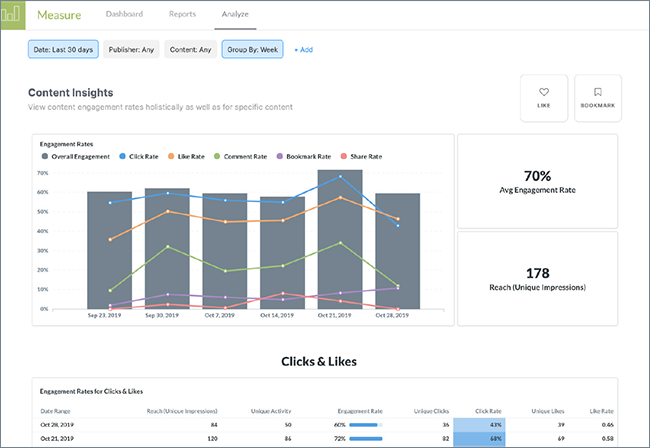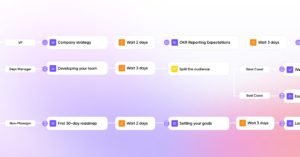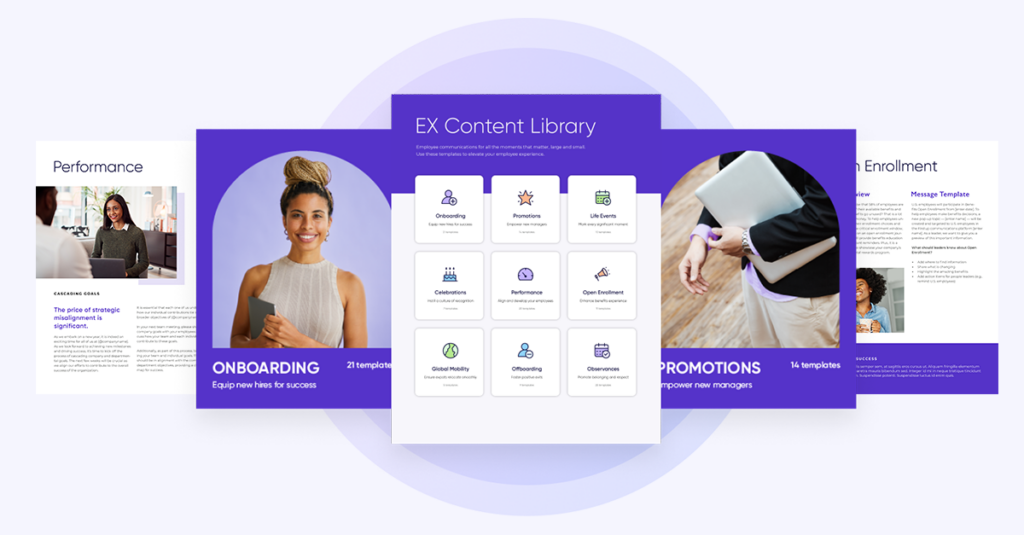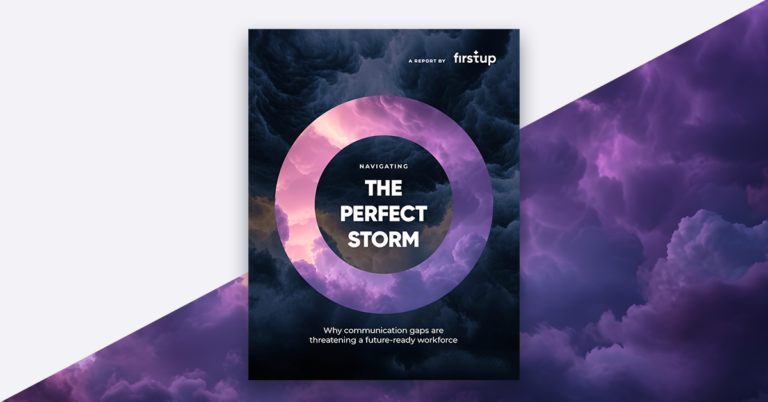What you’ll learn:
- Most organizations have no idea how many employees they’re reaching with internal communication or whether the message is breaking through.
- Communicators are thirsting for the ability to measure their efforts accurately, both to improve their programs and show the value of their initiatives to executives.
- Reach metrics are one way of thinking about solving the problem and fostering a real community.
You have important news that must reach every company employee. You’ve crafted a compelling message and then posted it on all of your internal channels. But your work as a communicator, marketer, or HR professional isn’t finished when you tap “send.”
Do you know how much of your intended audience you actually reached? And do you know how many employees actually paid attention?
Probably not.
Ragan Communications found that only 22 percent of respondents said they are satisfied or extremely satisfied with their ability to measure their communication. And one-third don’t measure their efforts at all. Sadly, “spray and pray” is a practice that communicators are often forced to accept.

What organizations need is not only accurate communication metrics but an entirely new way of thinking about what’s most important to measure.
Quantifying your communication “reach” tells you whether you are on the right track to drive higher employee engagement, increase traffic to your company content, and grow your brand awareness externally. Research has shown that engaged employees stay with their companies longer, create better customer experiences, and are more likely to advocate for the company.
On the other hand, not knowing how your messaging is performing leaves you incapable of proving the value and impact of your communication efforts. It also makes it impossible to fine-tune your strategy to drive more relevance and create that engaged workforce. Your employees are left uninformed about critical aspects of the company and won’t have all of the information they need to do their jobs effectively.
With so many critical things to communicate, what is the best use of your precious time? Without measuring your efforts, how can you best fulfill your mission?
It’s very much like George Bernard Shaw’s famous quote:
“The single biggest problem in communication is the illusion that it has taken place.”
Tracking outputs (such as numbers of emails sent) tells you nothing. But metrics that provide visibility into the reach of your communication efforts can tell you everything.
“The new hot perspective in the comms market is Reachable Employees vs. Active Employees,” said Jeff Keener, Vice President, Employee Communications and Creative Services, at UPS.
Think of it this way:
- How many people get your messages?
- How many people read your messages?
- How many people act on your messages?
If you don’t know the answers, that’s a problem.
The importance of reach
First, let’s discuss “potential reach.” It’s the number of users who could potentially come in contact with your content. Next, you must drill down into who is getting messages.
This is reach.
It’s about getting your content to the right people at the right time.
That’s much different from Monthly Active Users (MAUs). That’s an extremely limited metric because it measures activity in a single platform. But think of all the ways your employees receive internal information. They don’t use the same platform. Some have email, some do not. Some like Slack or Microsoft Teams and others do not. Some like Chatter or Yammer or SharePoint.
We all receive information differently – on our terms. Disparate systems are difficult to track for a complete picture. You need a process that enables you to look across all of your systems. That’s important because your employees don’t use just one channel to access content.
That’s why the question should be: Did you REACH the intended employees with the message? It shouldn’t be about whether they log in to one platform or another.
Reach, by itself, also only tells part of a story. Engagement is something else. It’s about ensuring that employees are interacting with messages. Reach is the denominator in your measurement to contextualize other engagement metrics such as post views, likes, comments, shares, retweets.
Measuring engagement shows what content connects with your employees and their social networks. It enables you to calculate a realistic Earned Media Value – a measurement of your return on social sharing that proves the value of the program.
“Over the past few years, IBM has changed the way in which we communicate with our employees,” Ginni Rometty, CEO of IBM, said in an interview. “Instead of just informing employees on important news (top-down communications), we also want to give them the possibility to provide feedback, voice their opinions, and share their wants and needs (bottom-up communications).”
Digging into reach metrics
The Firstup Analyze dashboard gives you the insight you need to drive employee action and improve business performance enabling communicators, marketers, and HR professionals to measure the effectiveness of their communication.

- Get insights into every digital channel: Analyze breaks down complex data into robust, yet easy-to-absorb insights — right on your dashboard. Track engagement and reach across channels in your ecosystem to gain key workforce insights.
- Access data on your entire workforce: Sort data by location, business unit, channel, publisher, and more to learn what resonates with every part of your audience—including deskless workers.
- Track response to key initiatives: Associate any communication, poll, survey, video, or topic with an initiative, then track engagement and correlate it back to business performance.
Metrics can show you the ideal time and frequency for your messages. For example, what are the best days for the maximum reach and engagement? The aggregated view of total reach – across distribution points – allows you to apply the tactics of digital marketing to reaching and engaging your people.
That greater visibility just doesn’t create more work to fine-tune your strategy. There’s a real, provable payoff.
- 55% increased employee reach
- 73% faster time to publish
- Most consolidated at least 2 tools
- 63% faster to find the right information
- 46% increased content engagement
- 68% more effective in critical communications
- 30% faster onboarding and training
Organizations know this because they can track content across channels – including email, mobile messages, and third-party applications like intranets and collaboration tools. You have a single source of truth to prove the results.
One integrated platform distributing and measuring content across multiple channels is the difference.
It changes the game.
Every enterprise is unique in how it communicates with employees. When you have a platform that integrates with all of your existing channels, you can effectively measure the impact of your communication and tweak your strategy to fit your unique needs.
If you can’t measure success, you won’t know what’s working. Download our step-by-step guide to learn how to measure the value of your internal comms.
Download PDF








